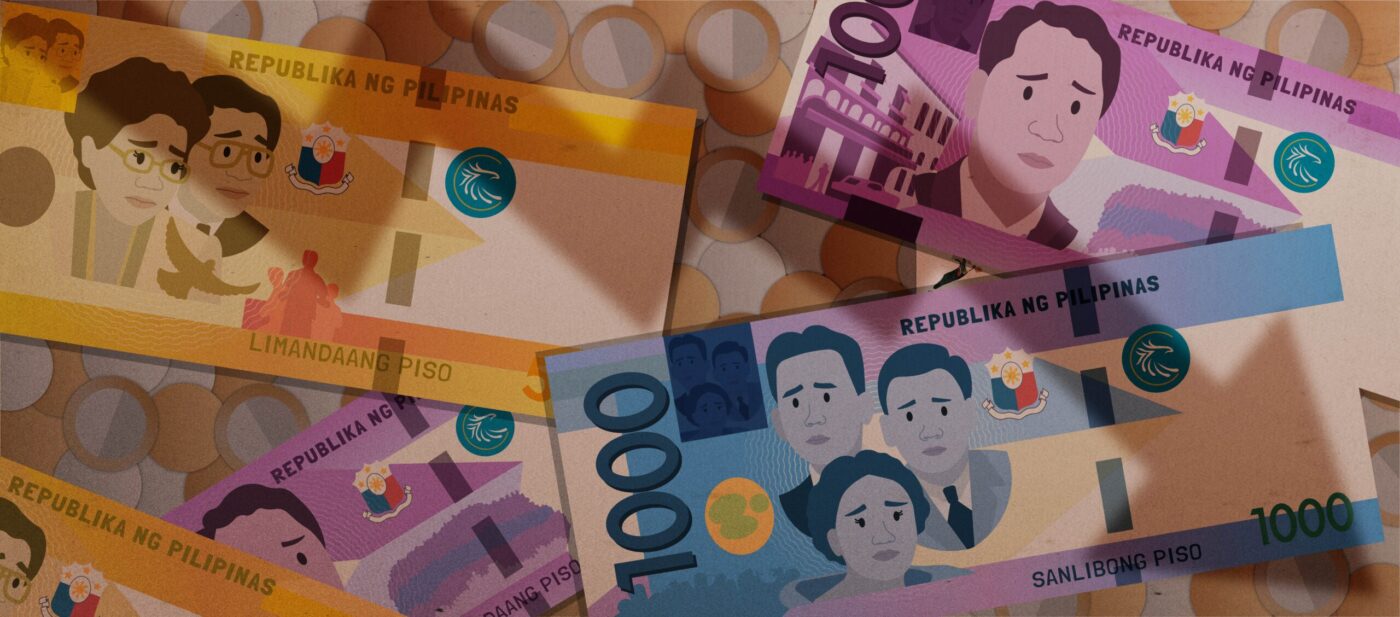THE VALUE of the Philippine peso sharply weakened in the second quarter of 2022, dropping to an 18-year low of Php 56.37 to USD 1 in July. Throughout that period, the peso was the weakest in Southeast Asia, as the declining currency stoked public concern on the outlook of the Philippine economy. Today’s sluggish peso, however, can only be understood with respect to economic developments at home and abroad which were prompted by the unique circumstances of the COVID-19 pandemic.
Clobbering a currency
In the Philippines, the Bangko Sentral ng Pilipinas (BSP) does not predetermine a price of currency that it will maintain. Instead, the rate moves dynamically with respect to economic developments. In terms of currency, the United States reigns supreme, often determining how other markets and currencies move.
When the United States Federal Reserve began to aggressively hike interest rates to tame inflation, demand for the dollar grew. Higher interest rates mean that investors can expect higher returns by channeling their money into dollar-denominated investments—thereby putting upward pressure on the dollar’s value.
From the Philippines’ side, Security Bank Corporation Financial Markets Segment Head Raul Pedro pointed to the surge in imports which increase demand for foreign currency and thus weaken the peso. To maintain growth, the Philippines has raised imports since its productive capacity is still lagging due to COVID-19’s shocks.
Further downward pressure on the peso also came from increased speculation on commodity prices. After oil prices peaked in months prior, Pedro observed a wave of advance importation in June when prices slightly dropped, signaling that firms were preparing for the usual spike in demand late in the year. With the foreign exchange market’s preference for the dollar, these prevailing conditions have further depreciated the peso.
Hitting close to home
The consequences of a diminished peso are not straightforward. Since the US dollar is now worth more Philippine pesos, demand for Philippine exports may increase. Overseas Filipino Workers (OFWs), especially those who are paid in dollars, will also find that their salaries are now worth more in Philippine pesos. This may boost gross national income, which is heavily reliant on foreign remittances.
Domestic realities, however, limit these potential benefits. The Philippines is still largely an importer, and its capacity to meet the increase in its export demand remains adversely affected by the pandemic. Furthermore, the increase in foreign remittances received by OFWs’ families are offset by rising prices of basic goods such as food and transport. In the second quarter of 2022, headline inflation averaged at 5.5%, exceeding the country’s target rate of 2 to 4%.
The weakening peso also makes foreign debt more costly to pay back. As of last year, the Philippines’ foreign obligations stood at $106.43 billion, 55.4% of which is denominated in the US dollar. Economics Department Lecturer Manuel Goseco also noted that the decrease in the peso’s demand has depleted the Philippines’ gross international reserves (GIR), which act as the country’s backup funds in case of an economic crisis.
Given the mixed consequences of the peso’s weakening, the BSP’s response is vital in effectively mitigating the negative effects.
Plotting the peso’s trajectory
Goseco expects that the BSP will continue to provide leeway for the peso to depreciate as it is favorable for foreign remittances as well as the competitiveness of local industries like agriculture. However, a stronger stance against the weaker peso is also necessary to quell excessive market speculation arising from the currency depreciation, which could lead to price instability.
“The BSP is cognizant that higher exchange rates do fuel further inflation,” Goseco explained.
On August 18, the BSP hiked interest rates by 50 basis points (bps), a tamer development compared to July’s hike of 75 bps. This would encourage firms and households to save rather than spend, thus curbing inflation and currency devaluation but also slowing down economic growth for the year.
The peso’s value will also be dependent on US inflation, as well as the Federal Reserve’s policies. Goseco points out that while inflation in the US is showing signs of stabilizing—with the consumer price index staying constant in July—the Federal Reserve now has to “work it downwards.”
On the Philippines’ part, BSP Governor Felipe Medalla projected that inflation will continue to exceed the 2 to 4% target due to the prominence of foreign inflationary forces. Correspondingly, credit agency Fitch Solutions forecasted the dollar to be valued at an average of P54.30 this year and P56.40 in 2023.
Amid a turbulent period in history, myriad factors are responsible for the peso’s decline and the consequences thereof are equally complex to dissect. Nonetheless, the matter will continue to be cause for public concern, especially amid a new administration and an enduring global health crisis.
Editor’s note: The views of Raul Pedro and Manuel Goseco are their own and do not reflect the views of their affiliations.




